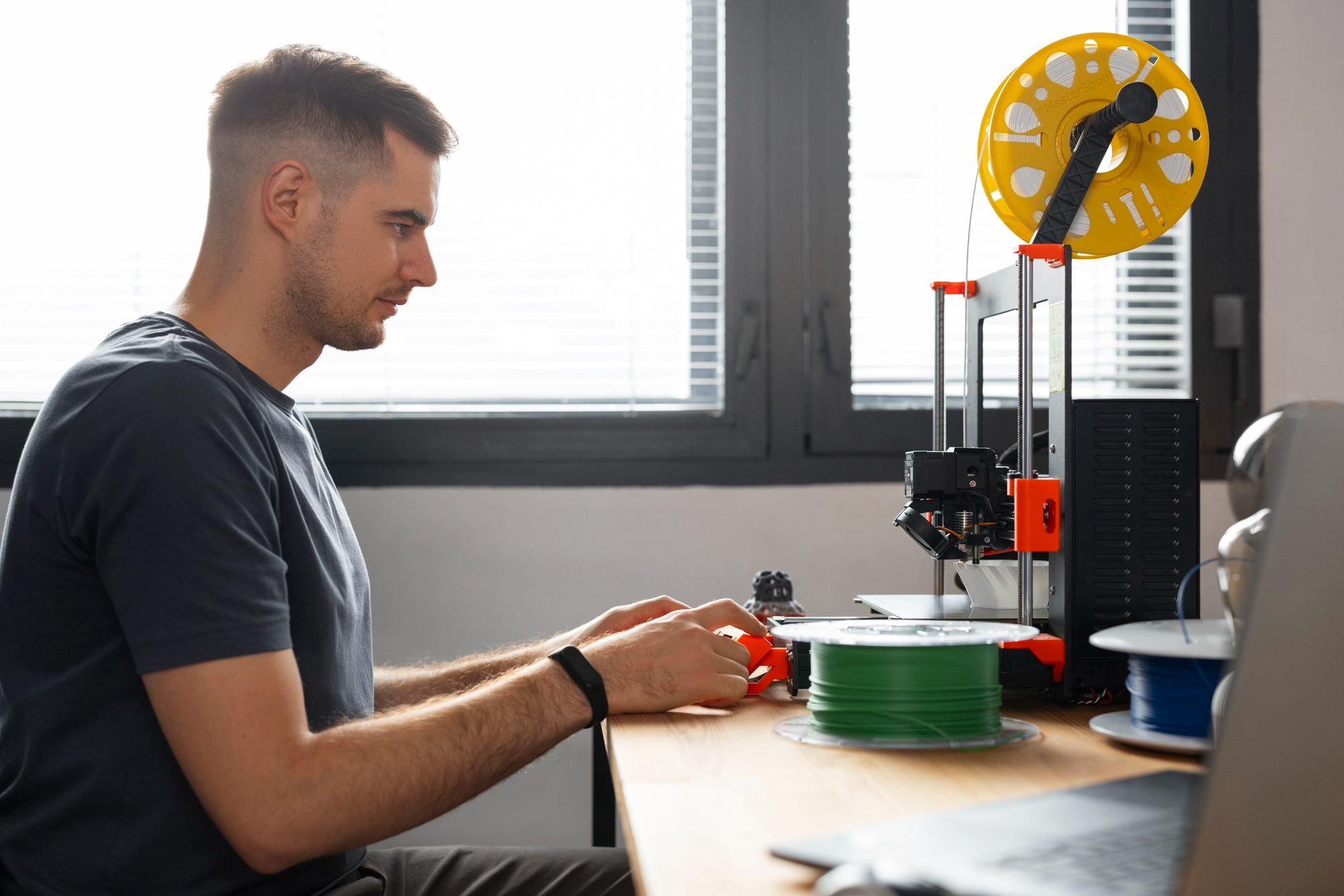The adoption of 3D printing in Dubai reflects the city’s ambition to be a global leader in technology and innovation. It is enhancing economic resilience and setting new benchmarks in cost-efficiency and speed of execution.
From construction to healthcare, it is revolutionizing industry sectors by driving efficiency and sustainability. However, the technology still has several challenges and limitations to address in terms of sustainability.
1. Limited Material Options
Choosing the appropriate material for printing is crucial to ensuring sustainability. Some materials are more environmentally friendly than others, providing biodegradable or recyclable options. Additionally, some print materials require less energy to use, reducing emissions and saving on operational costs.
The 3D printing industry is growing rapidly, requiring a new generation of skilled workers. This will lead to a shortage of labor, which may limit the number of projects that can be completed using this technology. Additionally, the specialized skills required by 3D printing can be difficult to find from an already limited pool of qualified candidates.
A major advantage of 3D printing is that it can eliminate the need for formwork, which can save on labour costs and construction time. However, the value of this savings is dependent on several factors, including the structure location and the type of printer used.
In addition, 3D printing offers more geometrical freedom than conventional methods. For example, the first printed home in Denmark was constructed without any straight lines to demonstrate this flexibility [7]. This technology could also be used to construct homes that are designed to fit on small lots.
The material costs of 3D printing are lower than those of traditional construction, but still more expensive than concrete. Nevertheless, local materials can be used to reduce these costs. Local businesses can be established to handle and prepare the materials for 3D printing, which could enhance community involvement and create jobs. Moreover, using local materials can help address the shortage of skilled workers in remote areas.
2. Energy Consumption
Unlike traditional manufacturing processes that typically use subtractive methods, 3D printing uses an additive process that builds structures layer by layer, significantly decreasing the amount of waste produced [9]. Additionally, geopolymers can replace cement in many cases, further reducing energy consumption and carbon footprint.
Additionally, by eliminating the need for frameworks that are needed to support formworks in remote construction projects, 3D printers can decrease the number of onsite workers and reduce the risk of accidents associated with assembling and disassembling formwork at elevated levels. This also lowers the time and costs of transporting formworks to and from construction sites.
In addition to reducing labour costs, using 3D printers in construction can significantly lower the duration of construction projects and the need for temporary accommodations in isolated areas. This can lead to significant savings for both builders and developers as well as increase the speed at which projects are completed.
In addition to lowering the cost of construction, utilizing 3D printed concrete can improve energy efficiency in hot climates by creating an insulated structure that keeps internal temperatures stable. Furthermore, the elimination of frameworks can reduce onsite construction time and allow for more windows to be used, further improving the building’s energy efficiency. Furthermore, utilizing locally available materials in the fabrication of 3D printed structures can promote local employment and encourage community involvement.
3. Water Consumption
In some cases, 3D printing can be a more sustainable alternative to conventional manufacturing. The process uses less energy and produces fewer materials than traditional methods. However, there are still challenges with using 3D printing to create sustainable products.
One of the most significant challenges is water consumption. Most 3D printers use hot liquid plastic to construct the printed object, which can be wasteful if the process is not controlled well. Additionally, some materials require cooling, which also requires a large amount of water. These factors can add up to significant environmental impacts.
Another challenge is ensuring that the printed product will be durable and long-lasting. This requires rigorous testing and design optimization, which can be costly. It is also important to ensure that the print material can withstand harsh environmental conditions, especially in Dubai’s climate.
3D printing has the potential to significantly reduce the carbon footprint of manufacturing by lowering energy demands and eliminating production waste. The ability to produce goods on-site can also reduce shipping costs and emissions by reducing the distance that products must travel to reach their destination.
4. Waste Generation
While 3D printing generates far less waste than machining, it still produces some scrap materials that can be put to good use. Creating a closed-loop system that recycles these waste materials and minimises the need for raw material extraction is a promising direction for sustainable manufacturing.
One option is to repurpose polymer waste from conventional plastic recycling (Hunt et al., 2015). This method can provide a sustainable source of printer filament while still meeting the consistency requirements of the process. This approach also avoids the environmental impacts of transporting virgin materials across long distances.
Another possibility is to design for sustainability with circular economy principles in mind. This includes designing for disassembly and modular designs to maximise the reuse of components. Incorporating recycled materials in the printing process can help reduce waste and encourage innovation in manufacturing. Conducting in-depth life cycle assessments and developing sustainability metrics specifically for recycled 3D printing can also improve the sustainability of the technology.
Although 3D printing has great potential to promote economic growth, it is important to address the challenges associated with this emerging industry. By fostering a skilled workforce, addressing financial barriers, and developing comprehensive regulations, Dubai can ensure that its burgeoning 3D printing industry is both sustainable and competitive. With concerted efforts, Dubai can achieve its vision of becoming a global hub for innovation and technological advancement.





